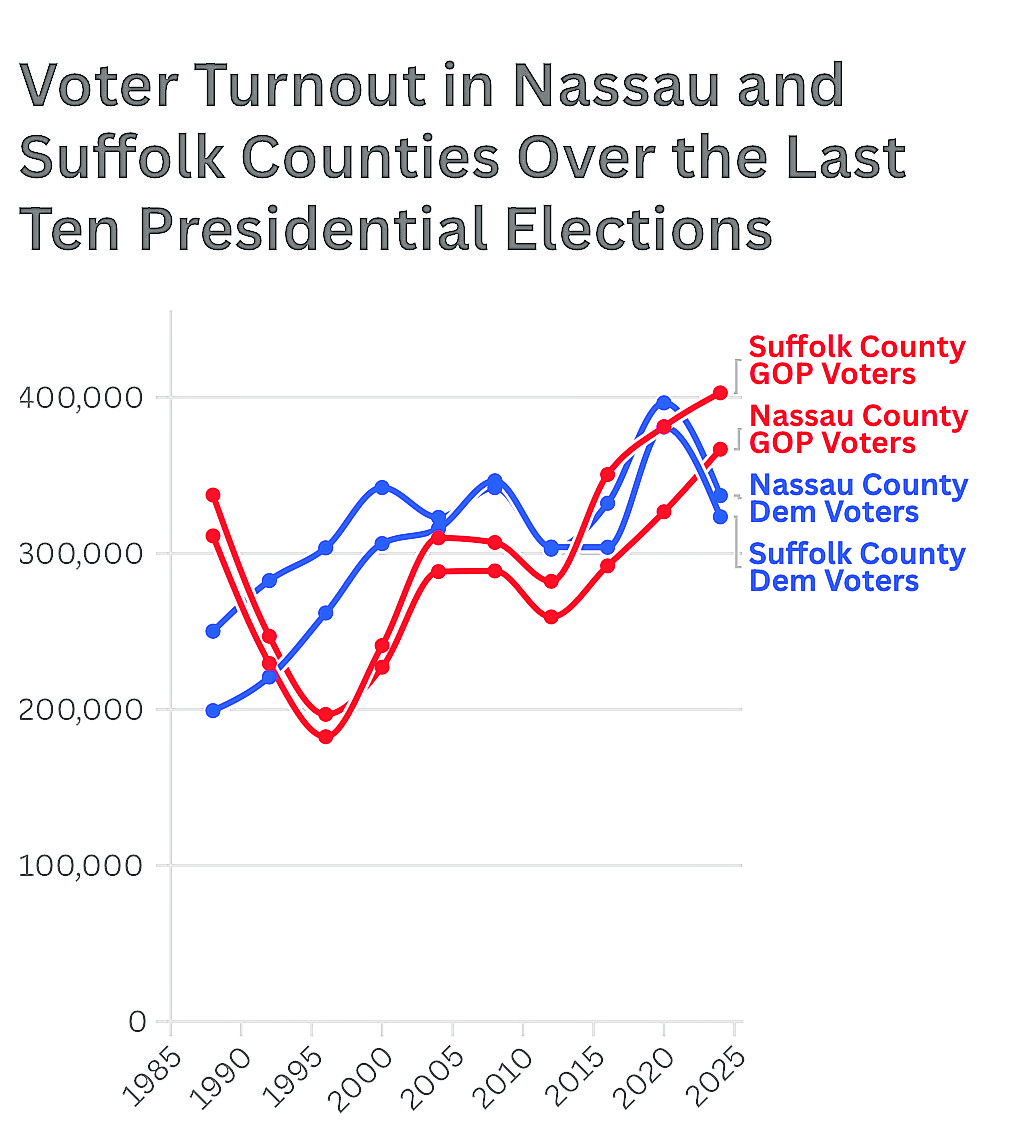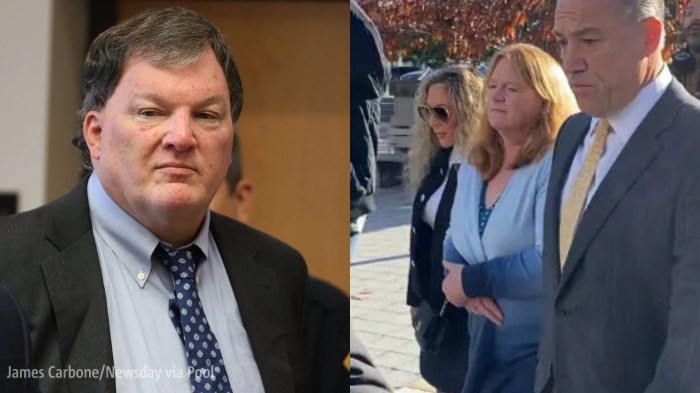In the 2024 presidential election, Nassau County was flipped red for the first time in more than two decades. Winning by a 4% margin, or nearly 30,000 votes, Republican Donald Trump defeated Democrat Kamala Harris after visiting only months before, and has been the first GOP candidate to win Nassau since George H.W Bush in 1988.
Trump also won Suffolk County by an 11% margin, or roughly 80,000 votes — the biggest win he’s seen in the county since he’s won it in the last three elections. Although there have been instances of outliers, Long Island’s votes have remained relatively split between candidates throughout the last several presidential elections. And like many other moderate suburbs around the country, the red shift across these areas nationally during the 2024 election doesn’t come as a shock to some.
“The people on Long Island, specifically Southern Brookhaven, it’s a super working class community and they care about their pocketbooks,” said Keith Davies, campaign manager of the Suffolk County Democratic Committee.
Davies cites examples of presidential elections passed, like in 2008, when Nassau and Suffolk were bringing some of the highest numbers of votes regionally for a Democratic candidate in decades. He explains that suburban, middle-class communities were struggling financially, and Barack Obama was a young candidate with a vision of hope for these groups.
“They voted for Obama because they weren’t happy with their pocketbooks and where the economy was going, and they bought into Obama’s message of change,” said Davies. “They fell in with that, that’s what they wanted, that’s what they voted for.”
Suffolk saw its highest voter turnout for a Democrat ever that year, with 346,000 votes, and Obama won in Nassau by a more than 8% margin. But as eight years went by, and the economy was not at a place that suburban voters had hoped for, Davies says that a flip to a candidate who promised to make America’s economy “great again” came as a feasible choice for the middle class.
In 2016, Donald Trump flipped Suffolk back to red after five consecutive elections of Democratic wins in the county. And although Nassau remained blue, the margin of victory was the smallest in a decade and Republican voter turnout was the highest the county has seen since 1988.
Although 2020 was a somewhat unexpected Democratic win according to Davies, he says that in the 2024 election, Democrats failed to recognize how highly the economy is valued among moderate suburban populations.

Intertwined with economical concerns, Lawrence Levy, the executive dean of the National Center of Suburban Studies at Hofstra University, attributes 2024 Republican gains to the minority groups of the suburbs that the left has failed to hold onto.
“Republicans were able to get more Jewish, Latino, Black and Asian votes … and those are the growing demographic groups in suburban areas,” said Levy. “Those are the groups that helped move Nassau County from red to light blue.”
Levy and Davies both say that votes from Latino men in this election came in higher than expected, explaining that many Latino families who have been living in Long Island for generations were not thrilled about new immigrant populations entering their neighborhoods.
“There were a number of Latinos who said these [Biden’s] immigration policies are screwing us,” said Levy. “They’re also middle class voters who are not happy about the price of eggs.”
Davies adds that Suffolk’s wide economic and racial diversity within the Democratic Party is often overlooked, leading to upper class communities taking control of the party’s messages and leaving minority communities feeling unseen.
“They’re the people in the more affluent, white, Democratic areas of our county telling us [the committee] how to be Democrats, and telling Black and Brown people how to feel,” said Davies.
As many minority suburban populations felt left behind by Democrats during this election cycle, Levy says that on the flip side, Trump pushed hard to motivate white suburban voters.
“There was a feeling that Trump had hit a ceiling about how many votes he could squeeze out of the white, non-college-educated ‘MAGA’ base, and he squeezed more,” he said. “If they weren’t that motivated, that helped energize them.”
As both Nassau and Suffolk finished the 2024 election with the highest Republican voter turnout in decades, a question arises about the future of Long Island’s politics: is the Trump era simply a pause in the blue-leaning trend that Long Island saw throughout the 1990s, 2000s, and early 2010s? Or is this a transformational shift back to the red suburbs of the 1950s, ‘60s and ‘70s?
Levy doesn’t have a definitive answer, but looks to the local elections that were swept by Republicans in 2022 to draw conclusions about suburban moderates.
“For those who say it’s just Trump, then how do you explain the Suffolk Legislature flipping, how do you explain a number of townships flipping?” he said, in addition to villages and school boards stacked with openly Republican members that Levy says are supposed to be nonpartisan positions.
Davies thinks that a re-ignition of the Democratic party will occur after Trump’s term because of the “cyclical” nature of moderate voters moving back and forth between Republican and Democratic candidates.
“That’s just what happens…when a party wins the White House and the House and the Senate, they lose it all two years later, and Republicans now have seen that history will repeat itself,” said Davies.
As the Trump era and 2024 election has seemed to turn a page for the politics of suburban communities, the future is unclear for Long Island. Will Democrats shift their platforms to serve moderates in order to win and pull Long Island back to blue? Is the return to a red suburbia inevitable? Levy says that insights may come much sooner than 2028.
“We’ll see that next November, and the November after that,” said Levy. “That will tell us the direction the suburbs are going in.”































